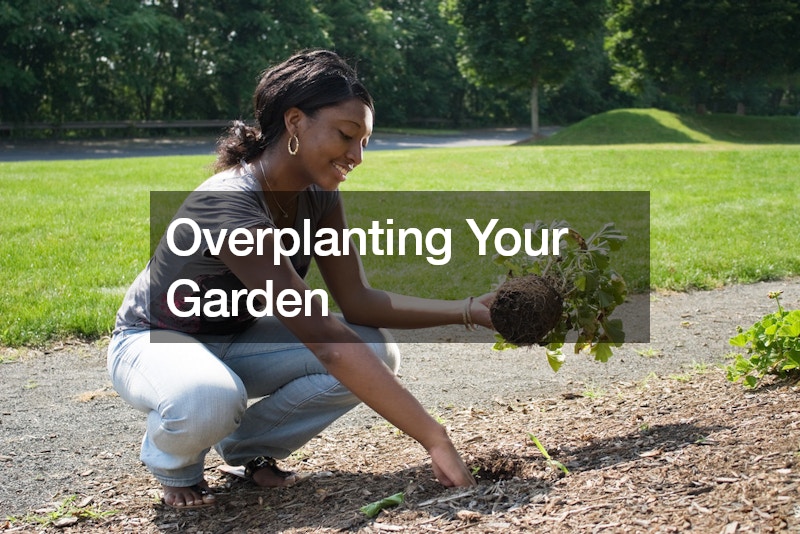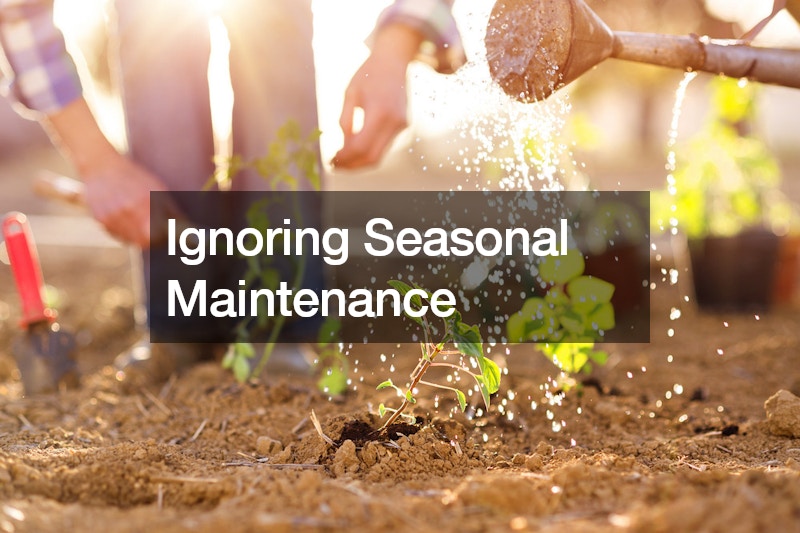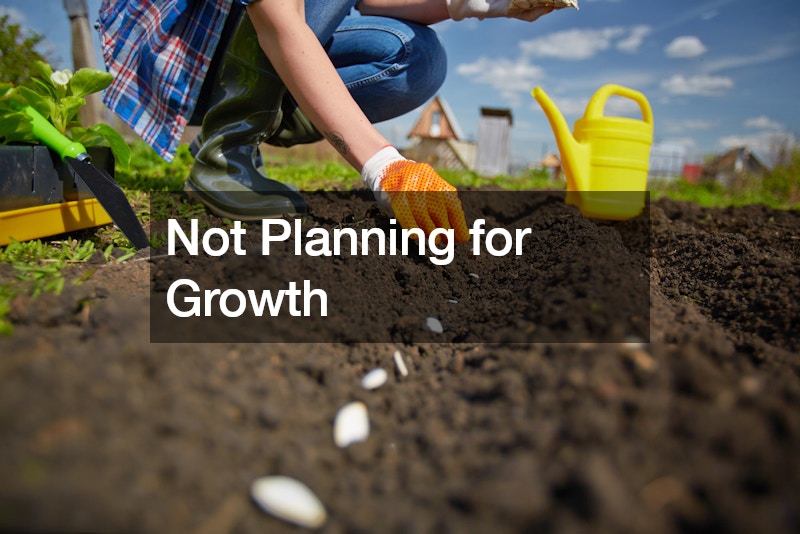Landscaping is an art that requires careful planning and execution to achieve a beautiful and functional outdoor space. In landscaping, avoiding common pitfalls can make all the difference between a thriving outdoor space and one fraught with challenges. It’s not just about enhancing the beauty of your surroundings but also about creating a harmonious and sustainable environment. The right landscaping choices can transform a bland space into a serene haven, ensuring both aesthetic appeal and functional utility. However, making the wrong choices can lead to bad landscaping, which can be both costly and frustrating.
Mistakes in landscaping can result in overgrowth, poorly maintained lawns, inefficient water usage, and a general lack of cohesion in your outdoor space. It is crucial to avoid these common pitfalls to maintain a landscape that is not only visually appealing but also sustainable. The first step to achieving the perfect landscape is understanding the various aspects that contribute to poor landscaping. This includes everything from plant choices and placement to soil preparation, irrigation, and maintenance. By gaining a deeper understanding of plant selection tailored to your region’s climate, implementing soil improvement strategies such as composting and mulching, and ensuring effective irrigation and drainage systems, you can cultivate a landscape that thrives year-round. Additionally, prioritizing regular maintenance tasks, from pruning and fertilizing to pest control and seasonal clean-ups, ensures that your outdoor space remains healthy and visually appealing.
By being aware of these elements and making informed decisions, you can ensure that your landscaping project is a success. In this article, we will explore ten common landscaping mistakes and provide insights on how to avoid them. From overplanting and poor soil preparation to ignoring local climate and seasonal maintenance, we cover it all. By addressing these issues, you can engage landscaping services or local landscapers effectively to achieve the best results. Avoiding these mistakes will save you time, money, and effort, ensuring that your landscape remains beautiful and healthy for years to come.
1. Overplanting Your Garden

Overplanting your garden is a common mistake that can lead to bad landscaping. When you plant too many species in a limited space, it can result in overcrowding and competition for resources like sunlight, water, and nutrients. This not only affects the growth and health of the plants but also contributes to a cluttered and unappealing landscape.
To avoid overplanting, start with a well-thought-out plan that takes into consideration the mature size of each plant. Engage the services of landscaping contractors who can help you design a balanced garden. They can recommend the optimal number of plants for your space and advise you on how to achieve a harmonious look.
Another effective strategy is to consult local landscapers who have experience with the specific conditions in your area. They can guide you on the best plant varieties that will thrive without overcrowding. By making informed choices, you can avoid bad landscaping and create a garden that is both beautiful and sustainable.
2. Poor Soil Preparation
Poor soil preparation can lead to many issues in your garden, contributing to insufficient landscaping. The soil is the foundation of your landscape, providing essential nutrients and support for plant growth. Without proper soil preparation, plants may struggle to establish roots, leading to poor growth and health.
One of the first steps in preparing your soil is to perform a soil test. This can reveal any deficiencies in nutrients and pH levels, allowing you to amend the soil accordingly. Landscaping contractors can provide professional soil testing and improvement services, ensuring that your garden has a strong foundation.
Another important consideration is soil structure. Compacted soil can hinder root growth and water absorption, leading to bad landscaping. Aerating the soil and incorporating organic matter such as compost can improve its structure and fertility. By taking these steps, you can ensure a healthier and more vibrant landscape.
3. Misplaced Plants
Misplacing plants is another common mistake that can result in poor landscaping. Each plant has specific requirements for sunlight, water, and soil type. Placing them in the wrong environment can lead to poor growth and increased susceptibility to pests and diseases.
To avoid this mistake, take the time to research the needs of each plant before placing them in your garden. Consider factors such as light exposure (full sun, partial shade, or full shade), soil pH, and moisture levels. Local landscapers can provide valuable insights into the best placement for your plants based on their extensive knowledge of the local climate and soil conditions.
Additionally, grouping plants with similar requirements together can help create a more cohesive and low-maintenance garden. This approach not only enhances the visual appeal of your landscape but also ensures that each plant has the best chance of thriving. By avoiding misplaced plants, you can prevent bad landscaping and create a more successful and enjoyable garden.
4. Ignoring Local Climate

Ignoring the local climate is a major mistake that can lead to detrimental landscaping. Different plants are suited to different climates, and failing to take this into consideration can result in poor plant growth and increased maintenance. Choosing plants that are not suited to your local climate can lead to frustration and additional costs.
One of the best ways to avoid this mistake is to consult with local tree services and nurseries. These professionals have a deep understanding of the local climate and can recommend plants that are most likely to thrive in your area. They can also provide advice on how to care for these plants throughout the year.
Additionally, consider incorporating native plants into your landscape design. Native plants are naturally adapted to the local climate and soil conditions, making them more resilient and easier to maintain. By making informed choices and working with a local tree contractor, you can avoid bad landscaping and create a garden that is both beautiful and sustainable.
5. Poor Irrigation Planning
Poor irrigation planning is a significant contributor to unsuccessful landscaping. Without a well-designed irrigation system, your garden may suffer from either under-watering or over-watering. Both of these issues can adversely affect plant health, leading to poor growth, disease, and even plant death.
To ensure your garden receives the right amount of water, it is essential to plan and install an efficient irrigation system. Engaging the services of an experienced irrigation company can help you design a system tailored to your garden’s specific needs. They can recommend the best methods for water distribution, such as drip irrigation or sprinkler systems, to ensure optimal water usage.
Regularly inspecting and maintaining your irrigation system is also crucial for preventing issues. Check for leaks, clogs, and other potential problems to ensure your system is functioning correctly. By investing in proper irrigation planning and maintenance, you can avoid bad landscaping and keep your garden healthy and vibrant.
6. Neglecting Hardscaping Elements
Neglecting hardscaping elements can result in a disjointed and unbalanced landscape, contributing to bad landscaping. Hardscaping refers to the non-plant elements in your garden, such as pathways, patios, retaining walls, and other structures. These features play a critical role in defining the layout and functionality of your outdoor space.
Incorporating hardscaping elements can add structure and visual interest to your garden. Hardscaping companies can help you design and install these features, ensuring they complement your overall landscape design. By carefully considering the placement and materials used for hardscaping, you can create a cohesive and visually appealing garden.
One common mistake is to focus solely on plants and neglect the hardscape. This can lead to an unbalanced and cluttered landscape. By integrating both softscape (plants) and hardscape elements, you can create a harmonious and functional outdoor space that enhances the beauty of your garden and avoids poor landscaping.
7. Ignoring Seasonal Maintenance

Ignoring seasonal maintenance is another mistake that can lead to bad landscaping. Regular upkeep is essential to ensure the health and beauty of your garden throughout the year. Failing to perform necessary maintenance tasks can result in overgrowth, pest infestations, and other issues that negatively impact your landscape.
Engaging the services of a pest control service can help you manage any pest problems that arise. Regularly inspecting your garden for signs of pests and disease can prevent these issues from escalating. Additionally, seasonal maintenance tasks such as pruning, mulching, and fertilizing are essential for keeping your plants healthy and thriving.
Creating a seasonal maintenance schedule can help you stay on top of these tasks. By performing regular upkeep and addressing any issues promptly, you can prevent bad landscaping and ensure your garden remains beautiful and well-maintained throughout the year. Engaging professional landscaping services can also provide valuable support in maintaining your landscape.
8. Inadequate Lighting
Inadequate lighting can result in a landscape that lacks both functionality and visual appeal, leading to insufficient landscaping. Proper lighting enhances the beauty of your garden, highlights key features, and ensures safety and usability during the evening hours. Without adequate lighting, your landscape may appear dull and uninviting.
Consider incorporating a variety of lighting elements to create a balanced and well-lit garden. Landscaping lighting services can provide expert advice on the best types of lighting for your space, including pathway lights, spotlights, and accent lights. They can help you design a lighting plan that enhances the overall aesthetic and functionality of your garden.
Additionally, consider energy-efficient lighting options such as LED lights or solar-powered lights. These options are not only environmentally friendly but also cost-effective in the long run. By investing in adequate lighting, you can avoid poor landscaping and create a beautiful, safe, and inviting outdoor space.
9. Underestimating Costs
Underestimating costs is a common mistake that can lead to bad landscaping. Landscaping projects often require a significant investment of time, money, and resources. Failing to account for all the associated costs can result in budget overruns, incomplete projects, and subpar results.
To avoid this mistake, create a detailed budget that includes all potential expenses, from materials and labor to ongoing maintenance costs. Consulting with landscaping contractors can provide valuable insights into the expected costs of your project. They can help you plan and allocate your budget effectively to ensure a successful outcome.
Additionally, consider setting aside a contingency fund for unexpected expenses. This can help you manage any unforeseen issues that arise during your project. By thoroughly planning and budgeting for your landscaping project, you can avoid bad landscaping and achieve the results you desire without financial stress.
10. Not Planning for Growth

Not planning for growth is a mistake that often results in unsatisfying landscaping. Plants grow and change over time, and failing to account for their mature size and growth patterns can lead to crowded and overgrown gardens. This not only affects the visual appeal of your landscape but also the health and growth of your plants. By working with professionals, you can benefit from their deep plant knowledge and expertise.
To avoid this mistake, research the mature size and growth habits of each plant before adding them to your garden. Consider the space they will need as they grow and plan your garden layout accordingly. Lawn care services can provide valuable advice on selecting and placing plants to ensure a balanced and sustainable landscape.
Additionally, regular pruning and maintenance are essential to manage plant growth and prevent overcrowding. By planning for growth and engaging professional lawn care services, you can avoid bad landscaping and create a garden that remains beautiful and healthy as it matures.
In conclusion, avoiding common landscaping mistakes is essential to creating a harmonious and aesthetically pleasing garden. From overplanting and poor soil preparation to ignoring local climate and improper irrigation planning, these mistakes can lead to bad landscaping and increased maintenance costs. By engaging professional landscaping services, local landscapers, and hardscaping companies, you can ensure that your landscape project is successful. Regular maintenance and planning for growth are also crucial to maintaining a beautiful and sustainable garden. By being aware of these common pitfalls and taking proactive steps to avoid them, you can create a landscape that enhances the beauty and functionality of your outdoor space.



